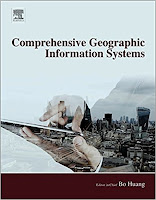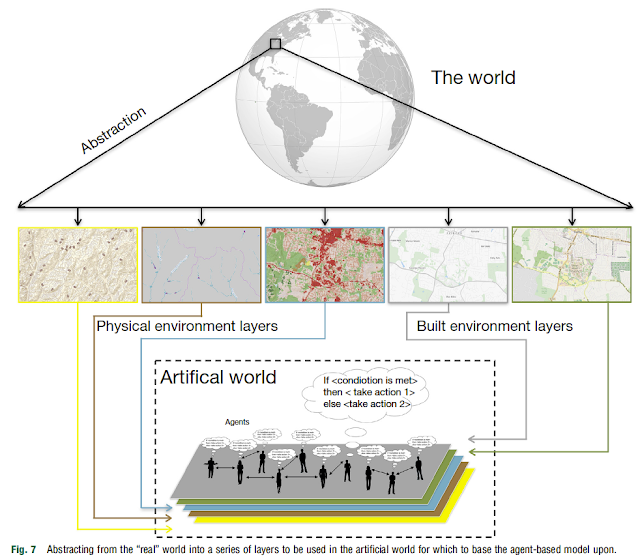Often I get asked the question along the lines of: “how are agent-based models are being used outside academia, especially in government and private industry?” So I thought it was about time I briefly write something about this.
Let me start with a question I ask my students when I first introduce agent-based modeling: “Have you ever seen an agent-based model before?” Often the answer is
NO, but then I show them the following clip from
MASSIVE (
Multiple
Agent
Simulation
System
in
Virtual
Environment) where agent-based models are used in a variety of movies and TV shows. But apart from TV shows and movies where else have agent-based models been used?
There are two specific application domains where agent-based modeling has taken off. The first being pedestrian simulation for example,
Legion,
Steps and
EXODUS simulation platforms. The second is the area of traffic modeling for example, there are several microsimulation/agent-based model platforms such as
PTV Visum,
TransModeler and
Paramics. Based on these companies websites they have clients in industry, government and academia.
“considers the strengths of agent-based modelling, which explains the behaviour of a system by simulating the behaviour of each individual ‘agent’ in it, and the ways that it can be used to help central banks understand the economy.”
Similar articles can be seen in the
New York Times and the
Guardian to name but a few. But where else have agent-based models been used? A sample (and definitely not an exhaustive list) of applications and references are provided below for interested readers:
- Southwest Airlines used an agent-based model to improve how it handled cargo (Seibel and Thomas, 2000).
- Eli Lilly used an agent-based model for drug development (Bonabeau, 2003a).
- Pacific Gas and Electric: Used an agent based model to see how energy flows through the power grid (Bonabeau, 2003a).
- Procter and Gamble used an agent-based model to understand its consumer markets (North et al., 2010) while Hewlett-Packard used an agent-based model to understand how hiring strategies effect corporate culture (Bonabeau, 2003b).
- Macy’s have used agent-based models for store design (Bonabeau, 2003b).
- NASDAQ used and agent based model to explore changes to Stock Market’s decimalization (Bonabeau, 2003b; Darley and Outkin, 2007).
- Using a agent-based model to explore capacity and demand in theme parks (Bonabeau, 2000).
- Traffic and pedestrian modeling (Helbing and Balietti, 2011).
- Disease dynamics (e.g. Eubank et al., 2004).
- Agent-based modeling has also been used for wild fire training, incident command and community outreach (Guerin and Carrera, 2010). For example SimTable was used in the 2016 Sand Fire in California.
- InSTREAM: Explores how river salmon populations react to changes (Railsback and Harvey, 2002).
While not a comprehensive list, it is hoped that these examples and links will be useful if someone asks the question I started this post with. If anyone else knows of any other real world applications of agent-based modeling please let me know (preferably with a link to a paper or website).
References
- Bonabeau, E. (2000), ‘Business Applications of Social Agent-Based Simulation’, Advances in Complex Systems, 3(1-4): 451-461.
- Bonabeau, E. (2003a), ‘Don’t Trust Your Gut’, Harvard Business Review, 81(5): 116-123.
- Bonabeau, E. (2003b), ‘Predicting the Unpredictable’, Harvard Business Review, 80(3): 109-116.
- Darley, V. and Outkin, A.V. (2007), NASDAQ Market Simulation: Insights on a Major Market from the Science of Complex Adaptive Systems, World Scientific Publishing, River Edge, NJ.
- Eubank, S., Guclu, H., Kumar, A.V.S., Marathe, M.V., Srinivasan, A., Toroczkai, Z. and Wang, N. (2004), ‘Modelling Disease Outbreaks in Realistic Urban Social Networks’, Nature, 429: 180-184.
- Guerin, S. and Carrera, F. (2010), ‘Sand on Fire: An Interactive Tangible 3D Platform for the Modeling and Management of Wildfires.’ WIT Transactions on Ecology and the Environment, 137: 57-68.
- Helbing, D. and Balietti, S. (2011), How to do Agent-based Simulations in the Future: From Modeling Social Mechanisms to Emergent Phenomena and Interactive Systems Design, Santa Fe Institute, Working Paper 11-06-024, Santa Fe, NM.
- North, M.J., Macal, C.M., Aubin, J.S., Thimmapuram, P., Bragen, M., Hahn, J., J., K., Brigham, N., Lacy, M.E. and Hampton, D. (2010), ‘Multiscale Agent-based Consumer Market Modeling’, Complexity, 15(5): 37-47.
- Railsback, S.F. and Harvey, B.C. (2002), ‘Analysis of Habitat Selection Rules using an Individual-based Model’, Ecology, 83(7): 1817-1830.
- Seibel, F. and Thomas, C. (2000), ‘Manifest Destiny: Adaptive Cargo Routing at Southwest Airlines’, Perspectives on Business Innovation, 4: 27-33.
Continue reading »





